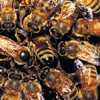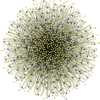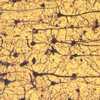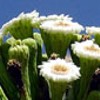We will pick readings according to the interests of students in the class. Some example readings are listed here:
Websites:
Check out Wikipedia:
Complex systems,
The different -omics,
'complex networks',
self-organization
Books:
• Camazine S, Deneubourg J-L, Franks NR, Sneyd J, Theraulaz G, Bonabeau E (2003). Self-Organization in Biological Systems (Princeton Studies in Complexity). Publisher: Princeton University Press. Check it out on
google.
This is a fairly detailed and extensive treatment of the topic of self-organization, i.e. the emergence of collective behavior without a central leader or template. Most examples are from social insects, but there are also some from microbes etc. Written by the world experts in the field. A great resource.
• Bar-Yam: "Dynamics of complex systems", Westview Press. Check it out on
google.
• Ball: "The Self-Made Tapestry: Pattern Formation in Nature" Check it out on
google.
• Watts: "Six degrees: the science of a connected age" WW Norton & Co. Check it out on
google.
• Stonier & Yu: "Complex systems: mechanisms of adaptation" IOS Press. Check it out on
google.
• Watts: "Small Worlds: The Dynamics of Networks Between Order and Randomness" Princeton Univ Press. Check it out on
google.
• Bossomaier & Green: "Complex systems" Cambridge Univ Press. Check it out on
google.
• Stocker: "Complex Systems: From Local Interactions to Global Phenomena" IOS Press. Check it out on
google.
• Kelso: "Dynamic Patterns: The Self-Organization of Brain and Behavior" MIT Press. Check it out on
google.
• Kauffman: "At Home in the Universe: The Search for Laws of Self-organization and Complexity" Oxford Univ Press. Check it out on
google.
Papers (reviews):
• Barabasi & Oltvai "Network biology: understanding the cell's functional organization" Nature Reviews Genetics 5: 101ff
PDF
• Kell et al. "Metabolic footprinting and systems biology: the medium is the message" Nature Reviews Microbiology 3: 557ff
PDF
• Lemberger: "Systems biology in human health and disease" Molecular Systems Biology 3:136
• Nedelec et al. "Self-organisation and forces in the microtubule cytoskeleton" Current Opinion in Cell Biology 15: 118-124
PDF
• Trianni & Dorigo: "Self-organisation and communication in groups of simulated and physical robots" Biol Cybern 95: 213-231
PDF
• Bonabeau et al.: "Self-organization in social insects" TREE 12: 188ff
PDF
• Boomsma & Franks: "Social insects: from selfish genes to self organisation and beyond" TREE 21: 303ff
PDF
• Kitano: "Computational systems biology" Nature 420: 206ff
PDF
• Stumpf et al. "Evolution at the system level: the natural history of protein interaction networks" TREE 22: 366ff
PDF
• Proulx et al. "Network thinking in ecology and evolution" TREE 20: 345ff
PDF
• Sweetlove & Fernie "Regulation of metabolic networks: understanding metabolic complexity in the systems biology era" New Phytologist 168: 9-24
PDF
• May: "Network structure and the biology of populations" TREE 21: 394ff
PDF
• Sporns et al.: "Organization, development and function of complex brain networks" Trends in Cognitive Sciences 8: 418ff
PDF
• Van der Meer: "Metabolic theories in ecology" TREE 21: 136ff
PDF
• Woodward et al.: "Body size in ecological networks" TREE 20: 402ff
PDF
Papers (original studies):
Molecular:
• Ma et al.: "The Edinburgh human metabolic network reconstruction and its functional analysis" Molecular Systems Biology 3:135
• Carlson: "Metabolic systems cost-benefit analysis for interpreting network structure and regulation" Bioinformatics 23: 1258-1264
Cellular:
• Glade et al. "Microtubule self-organisation by reaction-diffusion processes causes collective transport and organisation of cellular particles" BMC Cell Biology 5: 23
PDF
• Van Orden et al. "Self-Organization of Cognitive Performance" J Exp Psych 132: 331-350
PDF
• Turrigiano & Nelson "Homeostatic plasticity in the developing nervous system" Nature Reviews Neuroscience 5: 97ff
PDF
• Sole & Valverde: "Are network motifs the spandrels of cellular complexity?" TREE 21: 419ff
PDF
Organismal:
• Hemelrijk & Wantia "Individual variation by self-organisation" Neuroscience and behavioral reviews 29: 125-136
PDF
Ecosystem:
• Green et al.: "Connectivity and catastrophe - towards a general theory of evolution"
PDF
Modelling:
• Barabasi & Albert: "Emergence of Scaling in Random Networks" Science 286: 509-512
PDF
• May: "Will a large complex system be stable?" Nature 238: 413-414
• Sales-Pardo et al.: "Extracting the hierarchical organization of complex systems" PNAS 104 (39): 15224. (2007)
PDF
• Boccaletti et al.: "Complex networks: structure and dynamics" Physics reports
PDF
Engineering & robotics:
• Dobson et al. "Complex systems analysis of series of blackouts: Cascading failure, critical points, and self-organization" Chaos 17
PDF
• Prehofer & Bettstetter "Self-Organization in Communication Networks: Principles and Design Paradigms" Advances in self-organizing networks
PDF







